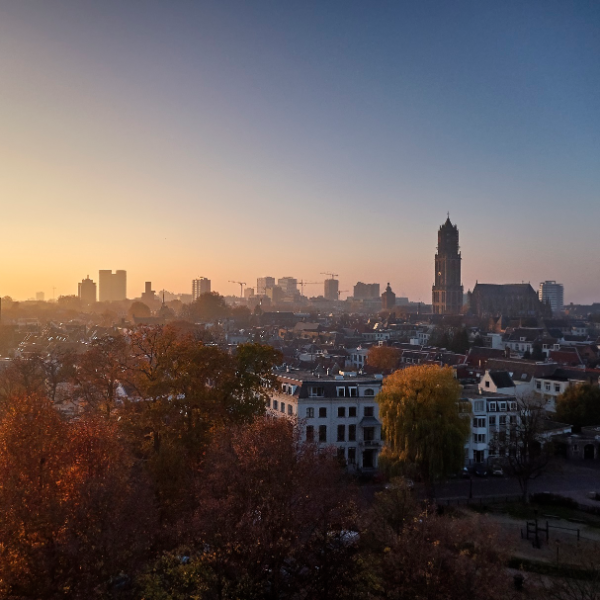Drone mapping, inspections and parking measurements

Drone mapping, inspections and parking measurements
Drones are being developed at a rapid pace and we also make use of these flying devices in our projects. This article discusses a number of applications in which drones help us improve our work.
What are drones?
The term ‘drone’ is a collective name for an unmanned aerial vehicle or ‘UAV’. Drones come in all shapes and sizes. From machines with military purposes on the one hand, to flying toys on the other. Today’s high-end consumer drones are equipped with cameras that are capable of collecting high-quality images or data. And this can be done manually or by means of programmable, repeatable flights on set coordinates.
Point clouds and 3D models with drone mapping
Surveying and documenting an existing situation has multiple purposes. This is called drone mapping. Having the drone perform automated scans of project locations enables point clouds and 3D models to be compiled. The drone flies according to a predetermined flight plan and takes multiple photos at a perpendicular angle of 90 degrees. These images are then combined to provide the software with sufficient information to create an accurate 3D model with elevation details. This then enables cross-sections to be extracted or computations to be made. For this, we use existing GIS software.

By ‘scanning’ the project location, a high-resolution overall photo of the area is created. This photo can be precisely aligned, using specific coordinates, with a topographical background that utilises the government’s digital ‘base register’ map of the country. This provides a much more detailed (and up-to-date) picture of the current situation than satellite images. This data can be used in a range of applications, such as to analyse parking issues, for example. Using drones significantly speeds up the process compared to conventional methods, which often involves literally walking through a neighbourhood. A drone also provides visual evidence of the actual number of parked vehicles.

Drones for inspection flights and monitoring
Drones also provide possibilities for the visual inspection of civil engineering structures and objects. Difficult to reach areas can be easily accessed with a drone, reducing the need to use - as well as the costs of using - an aerial work platform, for example, which often requires roads to be closed. We also use drones for repeatable flights to monitor the progress of a construction project or for the maintenance of objects. Moreover, drone data can be documented as ‘as built’ by the contractor at the end of the implementation period.
Photo material for visualisations, participation and the project page
Drone photos of a project site are used to visualise a refurbishment or new design. We then integrate elements into these high-resolution photos to create ‘before-and-after impressions’, which can be used during participation meetings with various stakeholders to elucidate our plans and projects. At the same time, these images can be easily used for other forms of project communication.
